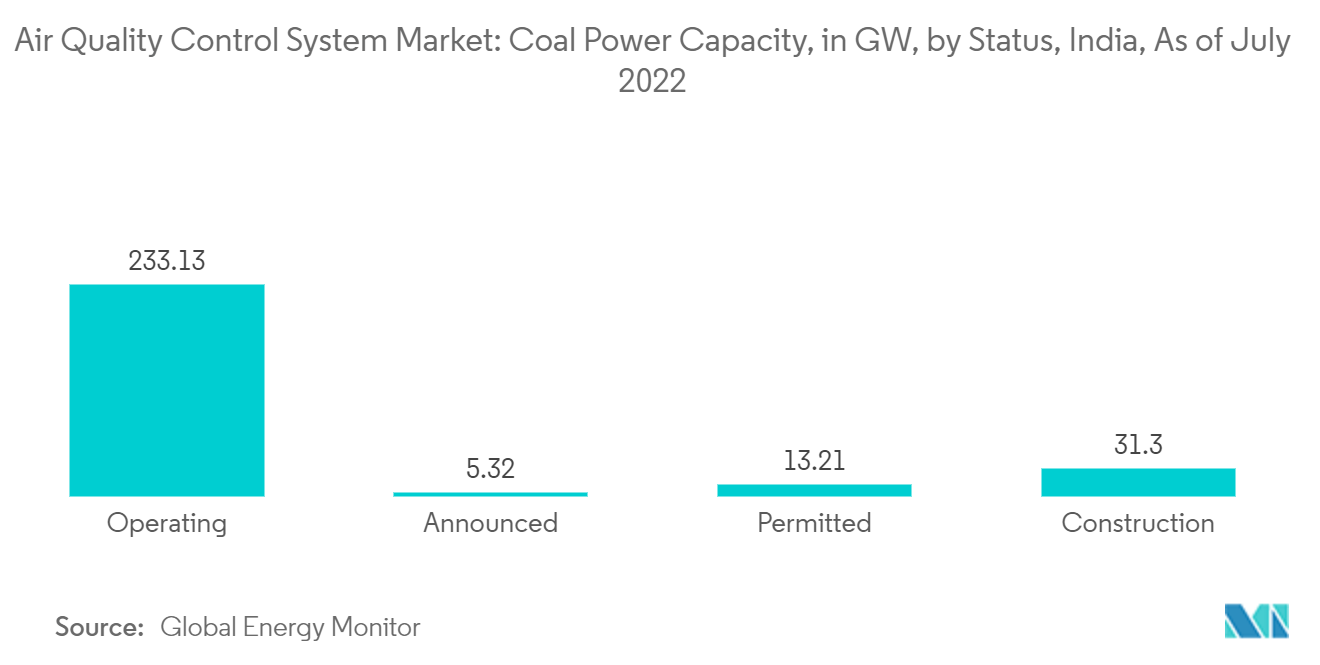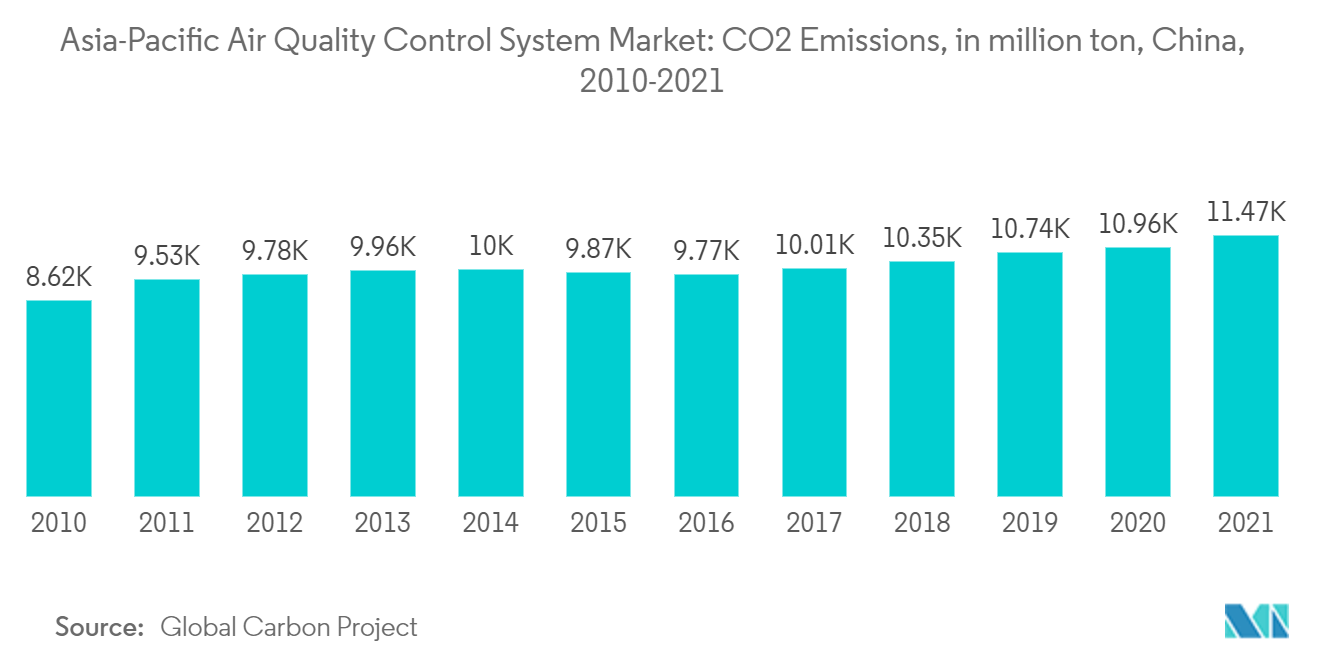Market Trends of Asia-Pacific Air Quality Control System Industry
This section covers the major market trends shaping the APAC Air Quality Control System Market according to our research experts:
Power Generation Industry Segment to Witness Significant Growth
- Power plants are the largest sources of emission of SO2, mercury, and acid gases. In the power sector, coal accounts for about 98% of SO2 emissions, 94% of mercury emissions, 86% of NOx emissions, and 83% of fine particulate emissions.
- The growing concerns regarding environmental pollution and the government's actions to curb the same are driving the growth of the AQCS market. Stringent international and government regulations, such as the Clean Air Act (CAA) and the Mercury and Air Toxics Standards, enforce the installation of systems that monitor and curb emissions to bring them to a safer level in power generation companies using fossil fuels.
- Further, despite the shrinking number of coal-based power plants globally, the countries (such as India) are still endorsing the new coal-based power generation projects. About 31 GW of power plants is under construction. Due to overcapacity and competition from cheaper renewables, low plant-load factors have made it difficult for coal plants to recover their investments. Despite these unfavorable market conditions for coal-based power, the governments in the region continue to invest in new plants.
- In July 2022, Through its subsidiary, JERA Power Taketoyo G.K., JERA Co., Inc. began commercial operation of Unit 5 of the Taketoyo Thermal Power Station located at 1-1 Ryugu, Taketoyo-Cho, Chita County, Aichi Prefecture, Japan. The company has been replacing aging equipment for the past couple of years. This high-efficiency coal-fired power plant is equipped with Ultra-Supercritical (USC) power generation technology.
- As of 2022, the Quang Trach 1 Coal-fired Power Plant is under construction in Vietnam with a capacity of 1.2 gigawatts, and the estimated plant investment is USD 1.27 billion. The project is expected to be commissioned by 2025 and generate up to 8.4 billion kilowatt-hours of electricity annually.
- Hence, the power industry is expected to witness significant growth for AQCS during the forecast period.

China is Expected to Witness Significant Growth
- The rapid growth in the Chinese economy, particularly the industrial sector, including power generation, cement manufacturing, and chemicals and metal processing, has led to significant growth in the emission of air pollutants in the country.
- Hence, the Government of China has recognized the severity of air pollution due to high energy consumption and the need to control pollution.
- While most countries experienced dramatic reductions in emissions in 2020 due to COVID-19, China was one of only a few countries where emissions increased in 2021. China released 11.47 billion metric tons of carbon dioxide in 2021, making it the world's largest polluter at the time.
- For instance, the State Council of China issued the Air Pollution Prevention and Control Action Plan in September 2013, which sets quantitative targets to improve the air quality in the country within specified time limits.
- In addition, all newly constructed and existing power plants have been subjected to mercury emission standards from 2015. These environmental regulations have further propelled the demand for air quality control systems in the country.
- In May 2022, A new Action Plan on Controlling New Pollutants has been announced by the General Office of the State Council of China. By 2025, the plan intends to screen chemicals of high concern in large quantities for environmental risks, continuously update a list of key regulated new pollutants after releasing the first edition in 2022, and implement environmental risk management measures, such as bans, restrictions, and discharge limits for key regulated new pollutants. Another objective of the project is to develop in phases legal systems and frameworks for managing the environmental risks associated with toxic and hazardous chemicals in order to control new pollutants strictly.
- Hence, factors, such as rising emissions, due to the growth in economic activities and the stringent regulations put forth by the government, have been driving the growth of the air quality control systems market in China.

